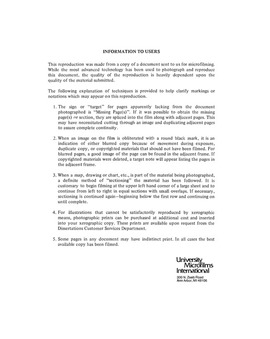| dc.contributor.author | Abrahamson, Julie Kristine, | en_US |
| dc.date.accessioned | 2013-08-16T12:29:16Z | |
| dc.date.available | 2013-08-16T12:29:16Z | |
| dc.date.issued | 1984 | en_US |
| dc.identifier.uri | https://hdl.handle.net/11244/5279 | |
| dc.description.abstract | I have investigated the formation of the aa-tRNA*EF-Tu*GTP ternary complex spectroscopically by monitoring a fluorescence change which accompanies the association of EF-Tu*GTP with Phe-tRNA('Phe)-F('8), a functionally active analog of Phe-tRNA('Phe) with a fluorescein moiety covalently attached to the s('4)U-8 base. Using this approach, the protein-nucleic acid interaction could be examined directly and at equilibrium. The fluorescence emission intensity of each Phe-tRNA('Phe)-F('8) increased by 35-55% upon association with EF-Tu*GTP, depending on the solvent conditions. Thus, when Phe-tRNA('Phe)-F('8) was titrated with EF-Tu*GTP, the extent of ternary complex formation was determined from the increase in emission intensity. A nonlinear least squares analysis of the titration data yielded a dissociation constant of 0.85 nM for the ternary complex in 50 mM Hepes (pH 7.6), 10 mM MgCl(, 2), 50 mM NH(, 4)Cl, at 6(DEGREES)C. The (DELTA)H(DEGREES) of this interaction, determined by the temperature dependence of K(, d), was -16 kcal/mol; the (DELTA)S(DEGREES) was therefore -16 cal mol('-1) deg('-1) at 6(DEGREES)C in this buffer. In a more physiological polycation-containing solvent (polymix), the K(, d) was 4.7 nM. The ionic strength dependence of ternary complex formation showed that a minimum of two salt bridges and a substantial non-electrostatic contribution are involved in the binding of aa-tRNA to EF-Tu. | en_US |
| dc.description.abstract | The affinity of EF-Tu*GTP for aa-tRNA is much higher than necessary to obtain ternary complex formation in the cell, and this suggests that the very tight association between the protein and the aa-tRNA is required to take full advantage of the discriminatory mechanisms of the ribosomal complex, thereby reducing translational errors. | en_US |
| dc.description.abstract | The affinities of unmodified tRNAs for EF-Tu*GTP were determined by their abilities to compete with the fluorescent aa-tRNA for binding to the protein. As expected, titrations using two different fluorescent aa-tRNAs, Phe-tRNA('Phe)-F('8) and Val-tRNA(, 1)('Val)-F('8), gave similar values for the K(, d) of the E. coli Phe-tRNA('Phe) ternary complex. In polymix, the K(, d) values for yeast Phe-tRNA('Phe), E. coli Phe-tRNA('Phe) and E. coli Lys-tRNA('Lys) are 0.72, 1.16, and 7.7 nM, respectively. As expected the K(, d) value for fMet-tRNA(, f)('Met) for EF-Tu*GTP in polymix was shown to be much higher (2 x 10('-7) M) than for the elongator tRNAs. Unacylated tRNA was found to have a weak affinity for EF-Tu*GTP also, with an approximate K(, d) of 10('-5) M. | en_US |
| dc.format.extent | xi, 146 leaves : | en_US |
| dc.subject | Chemistry, Biochemistry. | en_US |
| dc.title | An investigation of protein-nucleic acid interactions : | en_US |
| dc.type | Thesis | en_US |
| dc.thesis.degree | Ph.D. | en_US |
| dc.thesis.degreeDiscipline | Department of Chemistry and Biochemistry | en_US |
| dc.note | Source: Dissertation Abstracts International, Volume: 45-08, Section: B, page: 2537. | en_US |
| ou.identifier | (UMI)AAI8425532 | en_US |
| ou.group | College of Arts and Sciences::Department of Chemistry and Biochemistry | |
